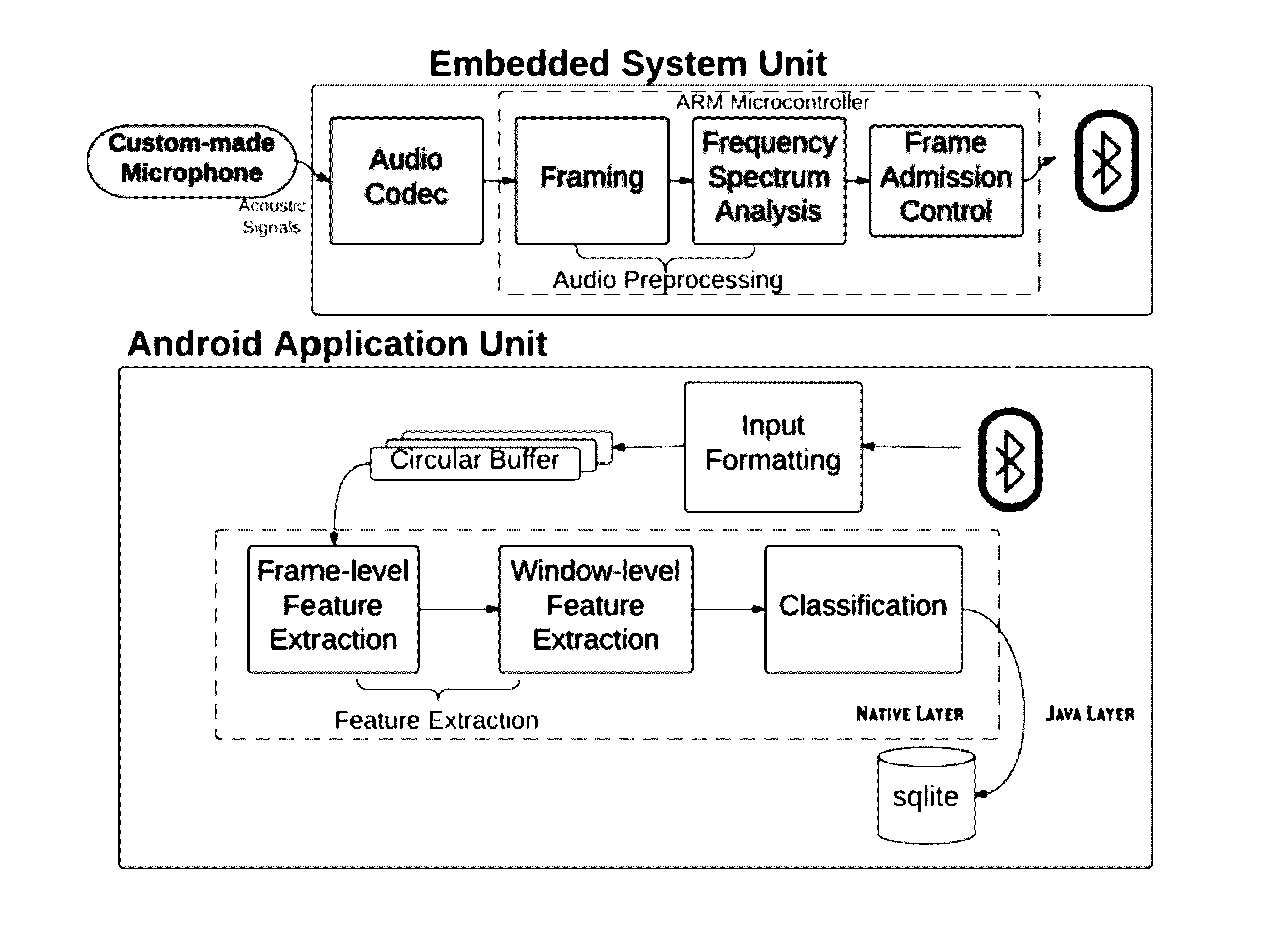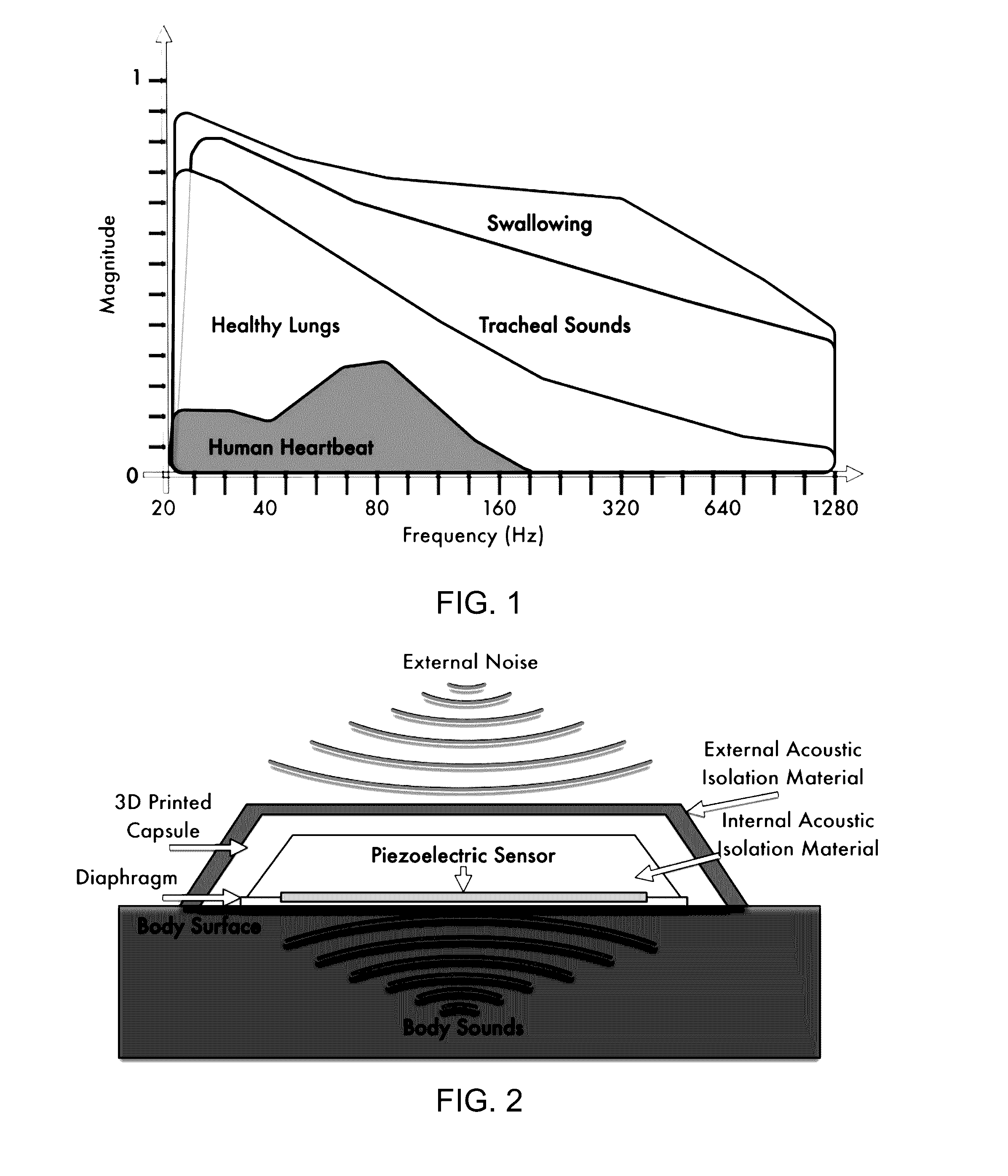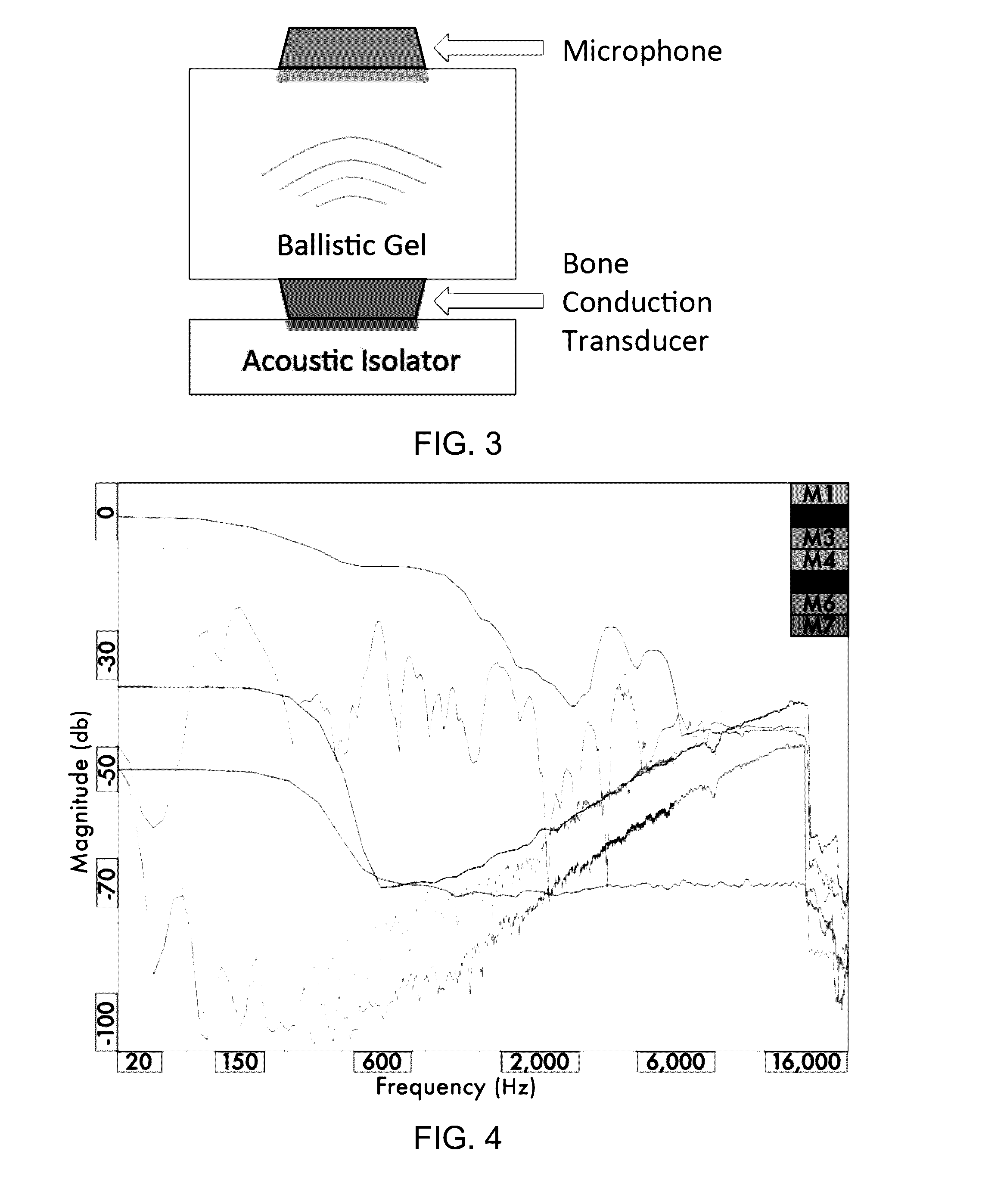Sensing non-speech body sounds
a non-speech body and microphone technology, applied in the direction of transducer details, electrical transducers, electrical apparatus, etc., can solve the problems of difficult to capture the non-speech body sounds of condenser microphones, weak air pressure variations, and inconvenient use of condenser microphones, so as to reduce external sounds and ambient nois
- Summary
- Abstract
- Description
- Claims
- Application Information
AI Technical Summary
Benefits of technology
Problems solved by technology
Method used
Image
Examples
Embodiment Construction
[0040]Techniques, systems, and devices are described for implementing a mobile sensing system, called BodyBeat mobile sensing system, for capturing and recognizing a diverse range of non-speech body sounds in real-life scenarios.
[0041]Section headings are used in the present document only for improving readability, and do not in any way limit the scope of the disclosed technology.
1. INTRODUCTION
[0042]Non-Speech body sounds contain invaluable information about human physiological and psychological conditions. With regard to food and beverage consumption, body sounds enable us to discriminate characteristics of food and drinks. Longer term tracking of eating sounds could be very useful in dietary monitoring applications. Breathing sounds, generated by the friction caused by the air flow from our lungs through the vocal organs (e.g. trachea, larynx, etc.) to the mouth or nasal cavity, are highly indicative of the conditions of our lungs. Body sounds such as laughter and yawn are good i...
PUM
 Login to View More
Login to View More Abstract
Description
Claims
Application Information
 Login to View More
Login to View More - R&D
- Intellectual Property
- Life Sciences
- Materials
- Tech Scout
- Unparalleled Data Quality
- Higher Quality Content
- 60% Fewer Hallucinations
Browse by: Latest US Patents, China's latest patents, Technical Efficacy Thesaurus, Application Domain, Technology Topic, Popular Technical Reports.
© 2025 PatSnap. All rights reserved.Legal|Privacy policy|Modern Slavery Act Transparency Statement|Sitemap|About US| Contact US: help@patsnap.com



